This is Part 4 of a 5 part series on the coming US war against China. For the other parts:

The Taiwan Question
“The United States acknowledges that all Chinese on either side of the Taiwan Strait maintain there is but one China and that Taiwan is a part of China. The United States Government does not challenge that position.” -Shanghai Communique of 1972, the fundamental basis of all relations between the US and the PRC.[1] The US has spent every moment since the formal establishment of diplomatic relations with China in 1979 undermining this commitment. Taiwan has long been a part of China, going back hundreds of years, and is inhabited predominantly by ethnic Han. The island was only detached in 1895 following China’s defeat in the First Sino-Japanese War, after which the island spent 50 years as a colony of the Empire of Japan. During this time many local elites became collaborators with Japan, and were therefore deemed to be national traitors to China. After the Allied victory in the Second World War, Japan was forced to return Taiwan to China, then under the Republican Nationalist Government of Jiang Jieshi. Within a few years of the war against Japan ending, the Chinese Civil War resumed between the Communists and the Nationalists. The Nationalists led by Jiang Jieshi lost the war and were forced to retreat to Taiwan, while Mao Zedong and the CPC proclaimed the People’s Republic of China. The civil war however was still unfinished, and both Mao and Jiang held immediate hopes for finishing it for their side, Mao by conquering the last Nationalist bastion on Taiwan and Jiang by enlisting US aid to retake the mainland. However, the outbreak of the Korean War froze the Chinese Civil War as the US Navy deployed to the Taiwan strait to prevent the PRC from finishing the war while Jiang was clearly informed that US support for a campaign to retake the mainland was not forthcoming. Once Jiang was established on the island, having killed the local left-wing opposition in the White Terror, he moved to further entrench his rule and promote development by conducting land reform, something he could not do on the mainland for fear of alienating the landlords that were a core part of his support base. While the land reform was moderate and compensated, the previous local Japanese collaborator elite was enraged by it.[2] For the next 20 years the US maintained the pathetic fiction that the Nationalist rump military dictatorship Republic of China on Taiwan was representative of China, and therefore entitled to diplomatic recognition as China and China’s UNSC seat.
By the 1970s, such a lie was no longer tenable, with the Nationalist representatives being unceremoniously evicted from the UN and the Communists invited to take China’s seat. Around the same time, the government on the mainland signaled interest in establishing productive relations with the US. Following several years of negotiations the US formally switched diplomatic recognition from the ROC to the PRC. Among the conditions for establishing relations was that the US would abandon diplomatic ties to the govt in Taipei including defense commitments, withdraw US troops and equipment from the island which at one point had included nuclear weapons, gradually reduce to zero US arms sales to Taipei, and avoid interfering in attempts to peacefully resolve cross-strait relations. The US almost immediately started reneging on its commitments through continued arms sales, the Taiwan Relations Act, as well as a variety of other insults and violations. At the time though, these breaches were considered relatively minor and tolerable in Beijing, so Chinese objections were not too strenuously voiced.[3]
After the 1970s, a process of liberalization took place on both sides of the strait. Deng Xiaoping led China away from Maoist radicalism, while Jiang Jieshi’s son and successor Jiang Jingguo also allowed a loosening of the martial law on Taiwan. Beijing also shifted towards an open policy of pursuing peaceful reunification and building economic, cultural and other cross strait ties in the interim, while maintaining a declaration of independence or a substantial foreign military presence as a red line. With this, cross strait reunification talks began in secret, ultimately resulting in the 1992 Consensus, in which both parties pledged allegiance to a One China policy while disagreeing about which was the true China, the indivisibility of China, and to work towards peaceful reunification. Jiang Jingguo’s rule eventually gave way to Li Denghui, who completed the liberalization process and was the first president of the ROC to be born on Taiwan, his family having been pro Japanese collaborators with Li himself joining the Japanese Navy during the war. Li was the first major political leader on the island to begin publicly deviating from Chinese nationalism and begin promoting Taiwan independence and openly kowtowing to Japan.[4]
With liberalization, politics on Taiwan settled into two separate camps: the pan-Blue Chinese Nationalist camp and the pan-Green secessionist camp. The pan-Green coalition received substantial support from Western govts, especially the US and its NED, as they sought to cleave Taiwan from China permanently. Following Li Denghui, the first pan-Green president was elected, Chen Shuibian. Chen began a formal policy seeking to de Sinicize the country, removing China and adding Taiwan to things wherever possible and changing education to reflect a pro Japanese colonialist and separatist outlook. In response to such actions, the National People’s Congress in Beijing passed the Anti-Secession Law in 2005, formally authorizing the use of military force to prevent the secession of any part of China including Taiwan. In 2008, Nationalist candidate Ma Yingjiu won the presidency, who tried to reverse several of his predecessor’s policies and pursue stronger ties with the mainland. This effort was capped by the first cross-strait meeting by the leaders of the two sides ever in Singapore in 2015. However, the West was unwilling to allow the development of these ties which might lead to the peaceful reunification of China. The Ma administration sought to build on the success of its economic engagement with the mainland, and attempted to pass a substantial cross strait trade and investment agreement.
In response, the NED ginned up yet another color revolution, the Sunflower Revolution, to stop the agreement, which featured angry protestors storming the assembly building to stop the legislation (January 6 and sacred civility and institutions anyone?). Following the successful color revolution the next election saw a US government informer Cai Yingwen rise to the presidency. Cai promptly began wrecking as much of Ma’s fruitful legacy as possible while actively and directly seeking to antagonize Beijing and pursue diplomatic recognition as a separate entity, efforts in which she was vigorously applauded and assisted by the US and its other lackeys like Japan. This did not bear much productive fruit though ultimately, as Beijing was able to use its considerable economic and diplomatic clout to crush most of those efforts that involved non-Western countries or international institutions. The economy also suffered problems due to the reality that the overwhelming proportion of Taiwan exports were to the mainland, and the flow of mainland tourists slowed to a trickle.[5] With failure on other fronts assured, Cai resorted to the one thing she knew best, begging and dancing for Uncle Sam. This proved more fruitful, as the US partially compensated for decreased mainland investment and trade with its own, and sold Taipei more weapons and formally declared them a vital US interest, placing them implicitly under the US nuclear umbrella.[6] The US also increased pressure on the remaining handful of countries that still formally recognized Taipei to keep doing so. However this “help” was not free, as the US forced the primary engine of Taiwan’s economy, the TSMC semiconductor firm, to open operations in the US despite significant doubts on the part of the company leadership. As the US prepares to feed Taiwan into the meatgrinder to stop Beijing, that important semiconductor production cannot solely remain on the island. Following Cai’s time in office, her deputy Lai Qingde took over in a narrow and controversial election where an agreement between the pan-Blue coalition and a third party to run a joint presidential ticket fell apart after the initial announcement thanks to enormous US pressure.[7] Nevertheless, the opposition managed to obtain a majority in the legislature. Lai has if anything worsened his predecessor’s policies, continuing to poke his finger in the eye of Beijing while kissing US ass even more than before. Lai has also tried to build a presidential quasi dictatorship, using control of the courts to strike down attempts by the legislature to hold him accountable, while DPP legislators openly support the ROK president’s attempted coup and propose that Lai should try to do so himself.[8] The DPP is increasingly unpopular, with mass protests of 150,000 people against them recently, and they are widely expected to lose the 2028 elections if they are held thanks to increased war fears and general discontent with their rule.
Most people on Taiwan do not want war, and are happy with the current status quo of self-administration while maintaining ties to the mainland and avoiding any action that would excessively anger Beijing. The rather unpleasant reality is that the Taiwan separatists have run out of easy road, any further attempts to advance their cause would likely bring the PLA crashing down on their heads. But that is precisely what the US wants. There is no other issue upon which the United States can provoke China into a war and still make itself look like the victim like it did with Russia-Ukraine. Other potential hotspots such as the Sino Indian border or the South China Sea are not nearly as important to China, and China is confident in its ability to freeze such conflicts and manage them appropriately. Only the Taiwan issue has the potential to force China’s hand, and no it isn’t about computer chips either, as Beijing knows that the US would rather burn down the island and salt the earth than let Beijing get anything. President Xi himself has directly stated to the US leadership that: “The Taiwan question, democracy and human rights, the system, and rights to development are China's four red lines, which allow no challenge.”[9] This is also not just some bugaboo pursued by an out of touch Communist leadership either. The Chinese masses are fiercely nationalistic, as polling shows or the average politics related interaction with a Chinese netizen will tell you. For China, for every Chinese, from the halls of the Zhongnanhai, to the schoolrooms of Chongqing, to the factory floors of Shenzhen, to the farm villages of Shanxi, Taiwan is the last unredeemed part of the motherland, the last vestige of the Century of Humiliation. To back down on reunification is to shame your ancestors, to turn your back on all the brave souls who died to save and liberate China, to once again invite the foreign devils to run amok killing and looting. The Taiwan issue is therefore the only issue where the US can really get a rise out of China, and also the only way they can start a war and make themselves potentially look like the victims.
It is because of this that the war on China can only start in Taipei and set the world ablaze from there, and of course for the US it is almost trivially simple. Get the DPP administration, which already serves at your beck and call given their utter reliance on your support abroad and at home, to issue a declaration of independence. Then it’s off to the races. Given this reality, how does the US plan to decide when to do it? Timing is everything, as anyone who has ever tried to run after a bus can tell you. The US faces a fundamental problem with regard to China. The US’s position is continually being sapped, by economic and social decay at home and imperial hubris and overextension abroad. By contrast, China does not suffer from such decay and seemingly bounds forth from strength to strength on their journey towards the “Chinese Dream”. In the toadying Western media, Western officials over the years have floated a variety of dates for an alleged “Taiwan invasion plan”. The West, in the finest Goebbelsian tradition, accuses the enemy of that which it is guilty, namely plotting to start a war over Taiwan.[10] Originally it was 2049, the 100-year anniversary of the establishment of the PRC and when Mao Zedong proclaimed from Tiananmen that the Chinese people had stood up. Since then, the alleged date has come closer and closer, first 2040, 2035, 2030, with the most recent widely propagandized date being 2027, with US officials like Secretary of State Marco Rubio or former President Biden warning of Chinese action then and the US Navy explicitly preparing for war at that date.[11] One factor in moving up the day is the US fear of local changes breaking the US strategy. Various western vassals are slated to have elections by 2028, including South Korea, Taiwan, and the Philippines, in each of these a far more dovish and less pro-US opposition party stands a very good chance of winning the election, and upsetting Washington’s very carefully arranged island chain. Ultimately though, greater forces than the low approval ratings of a few incompetent toadies are driving things forward. The efforts to try and hobble Chinese economic development have been far less successful than originally hoped, and the Chinese military adds more equipment in a year than the US does in a decade and for a far cheaper price. The US proxy war in Ukraine and the Gaza genocide have completely burned up any soft power the US still had with the developing world, while repeated vaporware promises mean that even pro-Western non-core govts are getting skeptical and are starting to open up more and more to China. The continued expansion of BRICS and the beginning formation of alternative trade and finance systems also has profound global consequences, rendering US sanctions increasingly useless. The simple truth is the US is running out of time to start the war, if it wants to have any chance of winning that is. Thus, through the shifting “Taiwan invasion day” you can see the fear rising in the US elite. They must act soon, lest China become unstoppable.
[1] Tallarida, Alex. “The Shanghai Communiqué.” Richard Nixon Foundation, December 19, 2019. https://www.nixonfoundation.org/2010/04/shanghai-communique/.
[2] Zha, Carl. “UNLOCKED Silk and Steel Podcast EP#50-Taiwan History Part 1.” YouTube, June 14, 2021.
[3] Freeman, Chas. “The 1981-82 Sino-American Taiwan Arms Sales Negotiations.” Chas W Freeman Jr, August 19, 2019. https://chasfreeman.net/the-1981-82-sino-american-taiwan-arms-sales-negotiations/.
[4] Zha, Carl. “UNLOCKED:Silk and Steel Podcast EP#79-Lee Tenghui Legacy on Taiwan with Xiangyu Part 1.” YouTube, September 20, 2020.
[5] Zha, Carl. “UNLOCKED Silk and Steel Podcast EP#94:History of Taiwan Part 7-Taiwan under KMT and DPP.” YouTube, October 14, 2021.
[6] “US Reaffirms, Elevates Its Strategic Alliance with Taiwan.” ANI, December 11, 2021. https://www.aninews.in/news/world/asia/us-reaffirms-elevates-its-strategic-alliance-with-taiwan20211211130516/.
[7] Huang, Paul. “Taiwan’s Opposition Candidate Ko Wen-Je @KP_Taiwan Alleged That AIT.” Twitter, November 16, 2023. https://x.com/PaulHuangReport/status/1725280308403331258.
[8] Dukes, Peter. “The KMT Has Called on the DPP to Apologise for Cheering on the Martial Law Debacle in South Korea.” Twitter, December 5, 2024. https://x.com/chinacounter/status/1864623833128554816?t=XcTQEAmVq56cJu9IKvdPKg.
[9] “At a Meeting on the Sidelines of #APEC, Chinese President Xi Jinping Told U.S. President Joe Biden...” Twitter, November 16, 2024. https://x.com/XHNews/status/1857947626861392337.
[10] Sui, Cindy. “Will China Try to Take Taiwan in Xi’s Third Term?” Voice of America, October 23, 2022. https://www.voanews.com/a/will-china-try-to-take-taiwan-in-xi-s-third-term-/6801580.html.
[11] Robertson, Noah. “How DC Became Obsessed with a Potential 2027 Chinese Invasion of Taiwan.” Defense News, May 7, 2024. https://www.defensenews.com/pentagon/2024/05/07/how-dc-became-obsessed-with-a-potential-2027-chinese-invasion-of-taiwan/.
Casimiro, Christine. “US Navy Unveils ‘project 33’ to Prepare for Conflict with China in 2027.” The Defense Post, September 23, 2024. https://thedefensepost.com/2024/09/20/navy-unveils-project-33/.
Bloomberg, Walter. “RUBIO: UNLESS SOMETHING DRAMATIC CHANGES...” Twitter, January 15, 2025. https://x.com/deitaone/status/1879563383529500763?t=XcTQEAmVq56cJu9IKvdPKg.

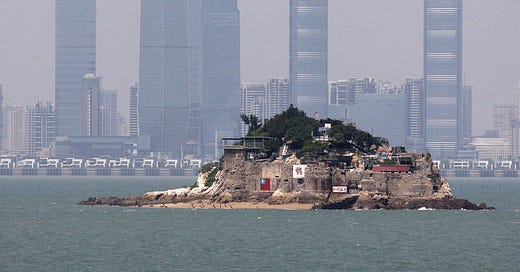



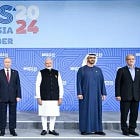

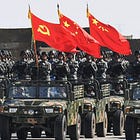
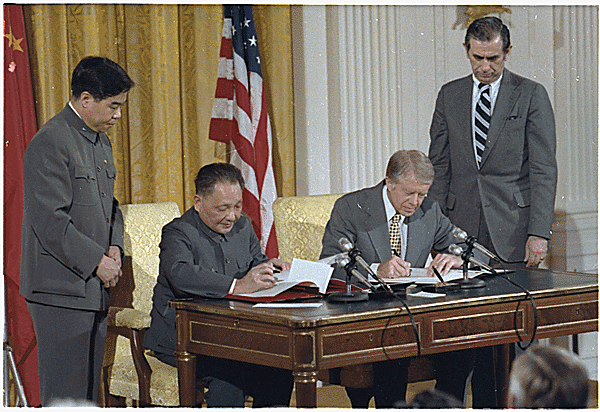
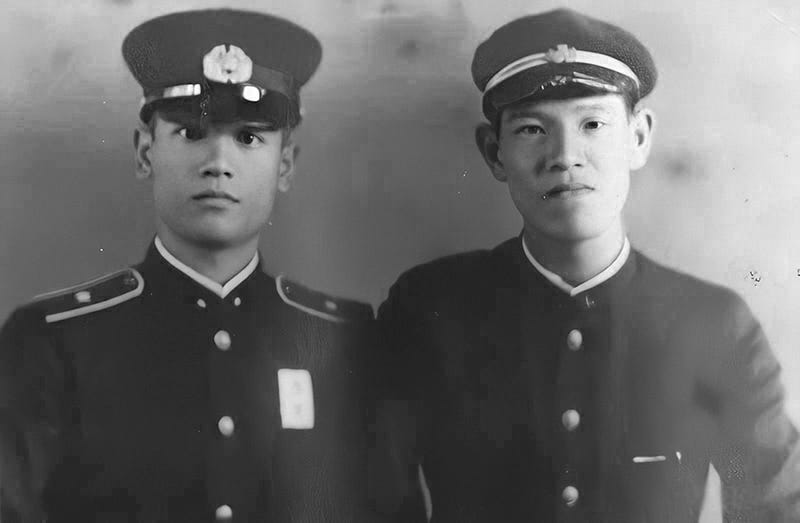
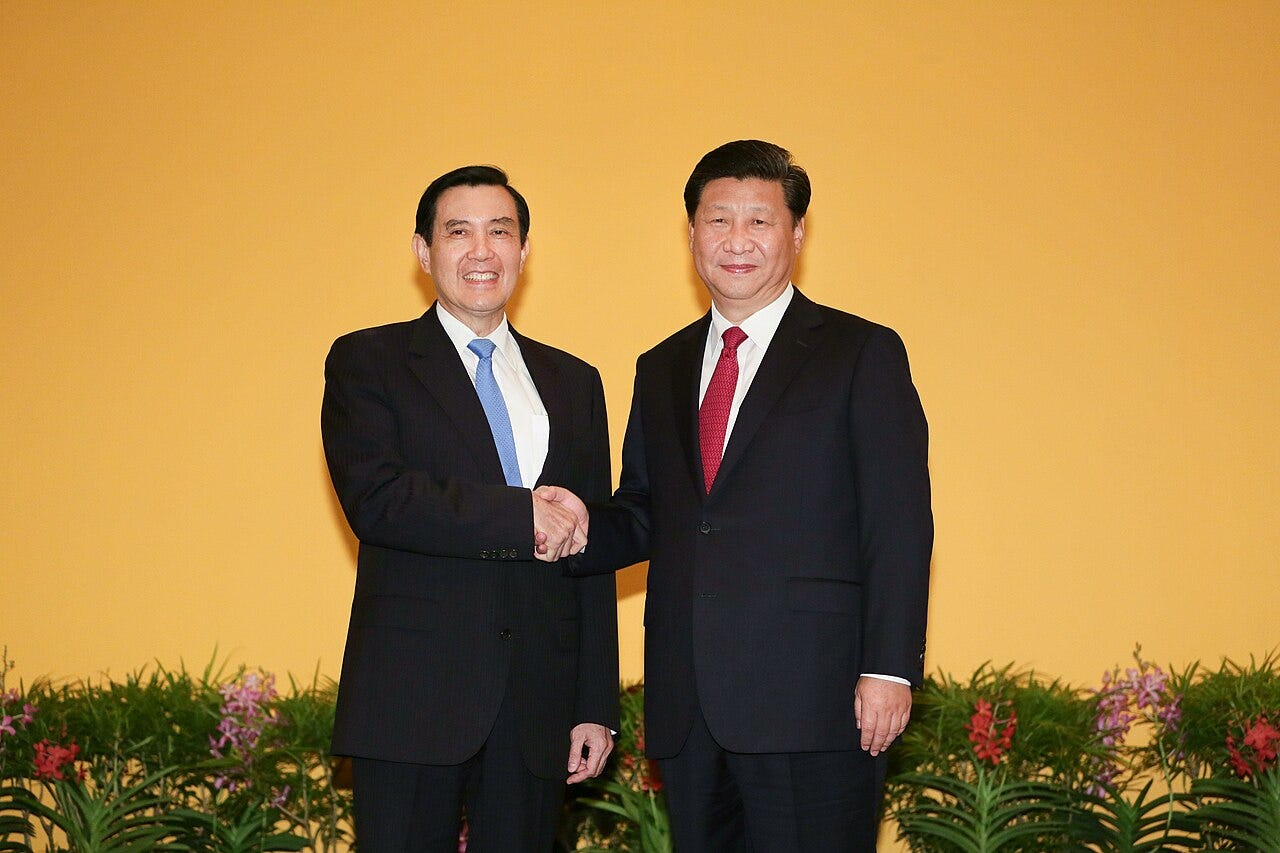
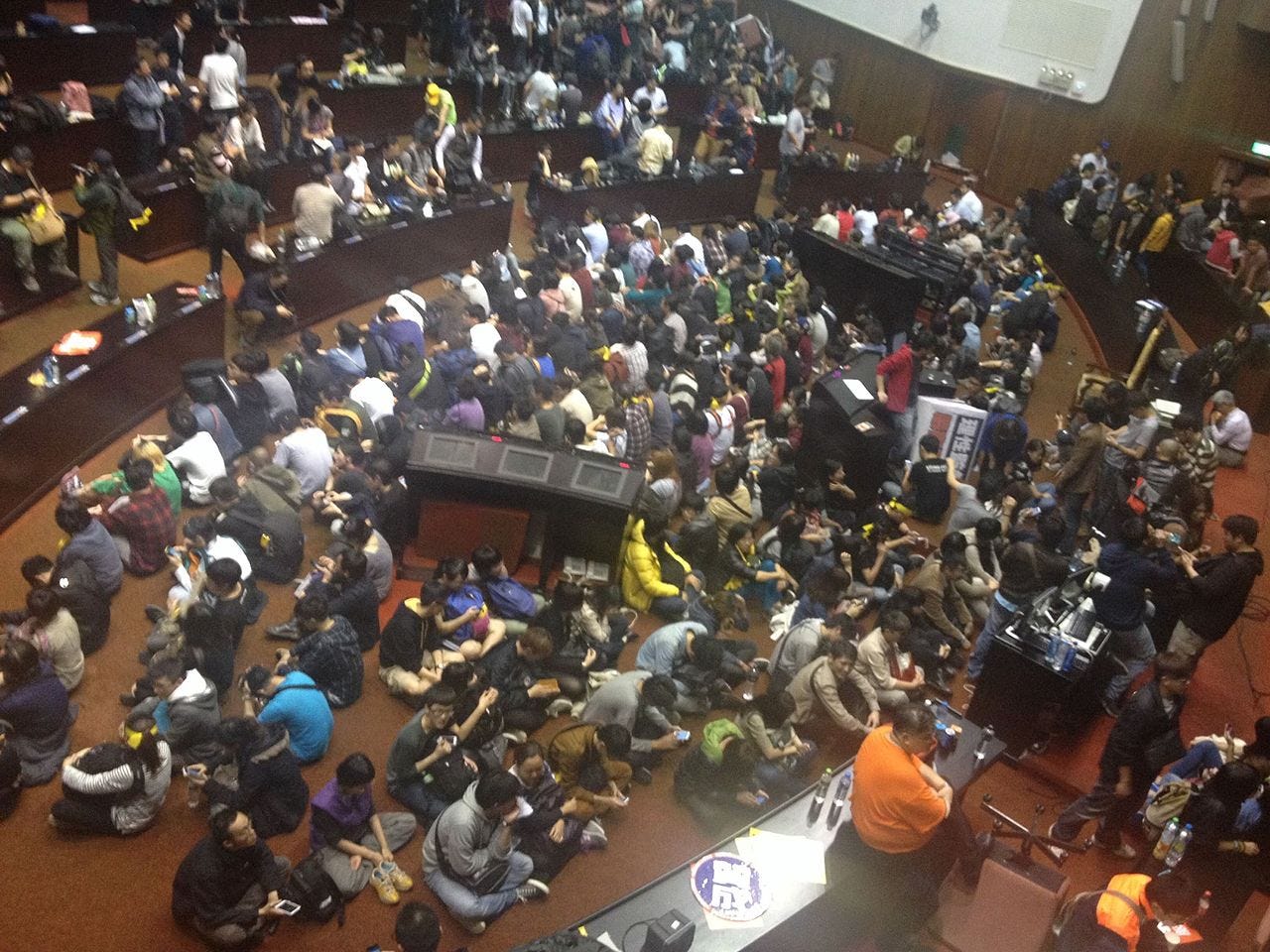

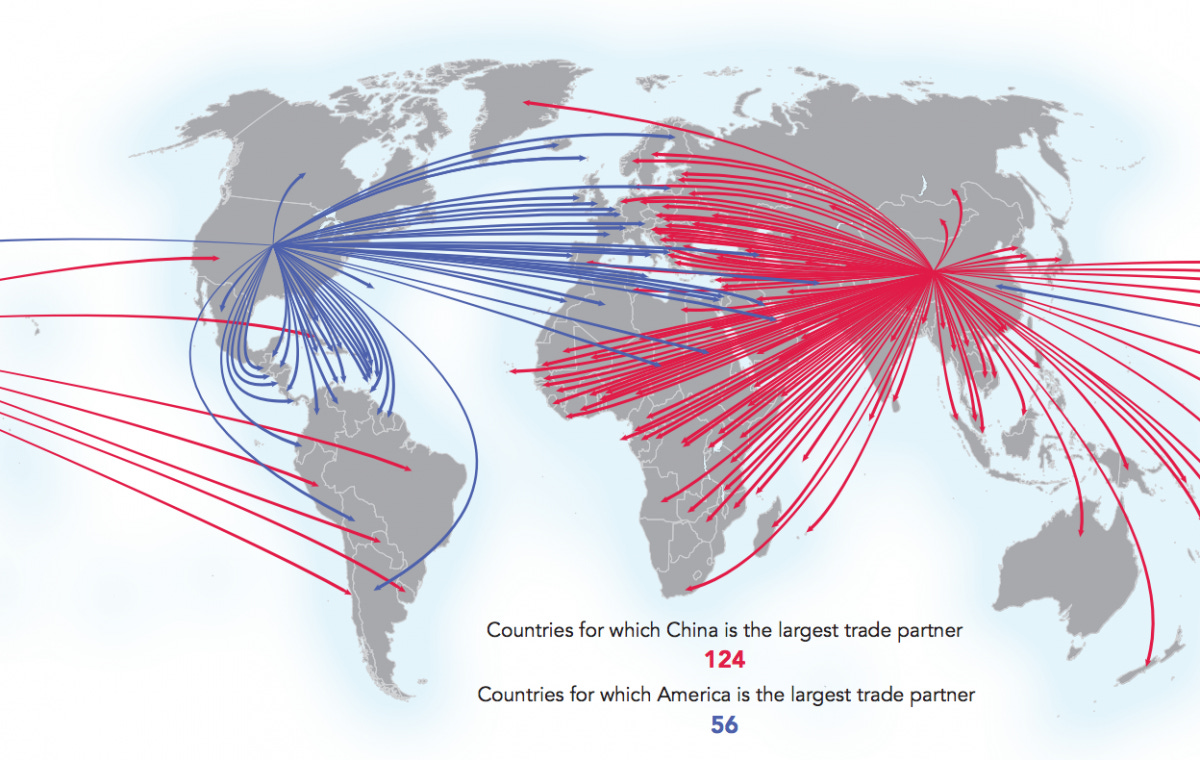
Primitive Cavemen looking with Envy across the sea everyday 🤣🤣
Most interesting to read a PRC take on the US-China imbroglio over Taiwan. Absent a formal Declaration of Independence from Taipei can we expect more years of 'vaporware' and shunting war threats to the sidelines? After all, it's what most Chinese either side of the Strait want, no? I have sympathy for the trauma inflicted on China in the Century of Humiliation and immense admiration for the fruits of Chinese civilisation which has been unbroken now for almost 2500 years, at least politically speaking. Nevertheless I would not wish to be a member of a non- Han minority under Chinese rule. The Humiliation would drive me to revolt.